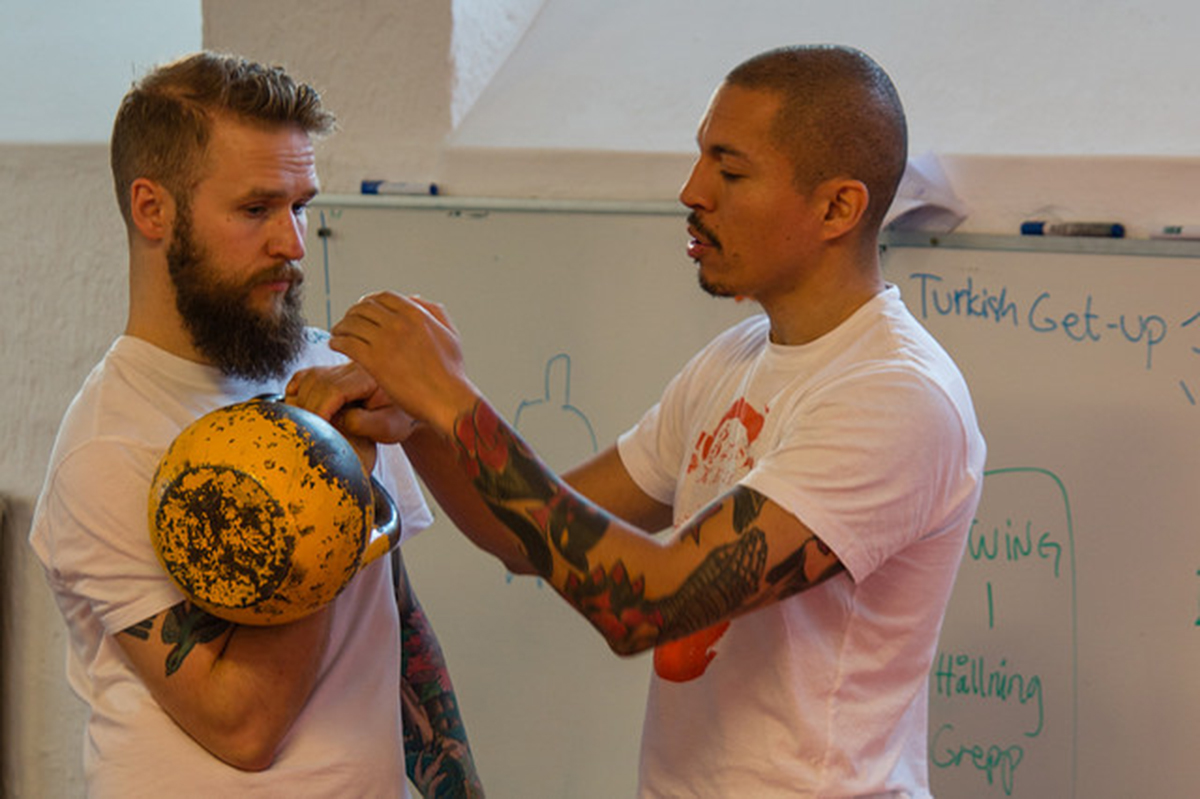Table of Contents
The outside leg swing is pretty similar to the swing you already know. There's just one crucial difference. Can you guess what it is?
Setting Up
From the hips up, your outside leg swing will be the same as your inside leg swing. You stil want neutral, packed shoulders, a slightly arched back and neutral neck, and you still want to lead the movement with your glutes. What is different, though, is that you won;t have the solid mass of your mid back to anchor the bells to. Instead they'll be out on either side of you. That means it makes sense to start these with lighter bells than you're used to, and practice the movement a little. It's not complicated but it does feel different.

Feet
Your feet should be almost but not quite together. Don't let knees or ankles touch. As with ordinary swings, you won't do much squatting, but you still need to protect your knees from torsion injuries by making sure they flex forward over your middle toes (the toe next to the large toe) and your weight is evenly distributed across an active foot.
Knees
I mentioned earlier that the potential for injury is quite low, and so it is, with one important exception: if you're careless, it would be easy to hit yourself in the knees with kettlebells. That's obviously something to avoid. To avoid it, spend some time swinging slow and gentle, getting used to a straight swing track with both arms and being careful to control the bells as they pass your legs. You can't swing with the aggression and power you're maybe used to with this variation because it isn't safe to do so.
The Swing
One end of the swing will resemble an upright skiers' tuck, with your arms level with your body and your back almost parallel with the ground. The other will see you in full hip extension with the bells out in front of you at shoulder height. What this means for the loading pattern is that on the way down it looks a lot like any other straight-arm pulling movement, and on the way up, while your glutes are providing all that force to propel the bells, your upper back is transferring it. The traps and anterior and medial deltoids will be reporting in soon enough, but you'll also be hearing rom your scapular retractors. In mnay ways the upwrad movement is similar to the clean in terms of its loading pattern, but without the high technical and mobility demands.
READ Kettlebell Clean And Jerk - For Power, Strength And Endurance
When And How?
I'd recommend putting this in at the end of training sessions. At the gym, do it after your main barbell work. Make sure you're not so fried you can't control the bells! Two to three sets of 25 swings with heavy bells, or if you prefer a lighter approach two 50s ought to do it.
If you like the look of this, or you think I've left out something vital, get in touch in the comments section below!
- Photo courtesy of .v1ctor Casale.: www.flickr.com/photos/v1ctor/8495391748
- Photo courtesy of
- Photo courtesy of
- Photo courtesy of


Your thoughts on this